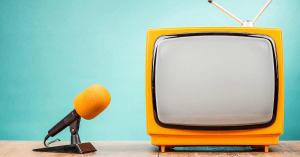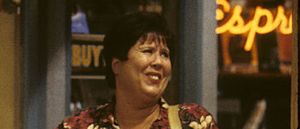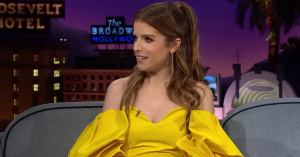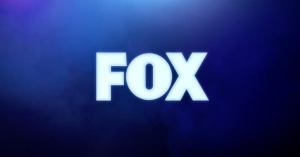The Super Bowl halftime show has become a massive event for the music industry each year, but it didn’t start out that way. The yearly football showdown has had some surprising headliners on stage before it became a spectacle – and after as well. Read on for a look back at the complete history of Super Bowl halftime shows.
For the last several years, the Super Bowl halftime show has been an entertainment event on par with an award show or the Thanksgiving day parade, even for non-football fans. Not only do some people tune in just for the commercials, but music fans flock to the broadcast for a nationwide spectacle. While this seems obvious now, in the early days of the Super Bowl the halftime show was far from essential viewing, and performers fought for every scrap of attention they could hold. Today, people are looking forward to Usher’s performance at Super Bowl LVIII with as much anticipation as the game itself.
Videos by PopCulture.com
Super Bowl LVIII airs live on Sunday, Feb. 11 starting at 11:30 a.m. ET on CBS, and streams live on Paramount+. In the meantime, here’s a look back at all 57 previous halftime performers up to this point.
1967-1969
The first three years of the Super Bowl had marching bands perform at halftime, like any other football game at any high school around the country. In 1967 the University of Arizona Symphonic Marching Band and the Grambling State University Marching Band performed, along with the Anaheim High School Drill Team and Flag Girls.
In 1968 the Grambling State University Marching Band took the field alone, and in 1969 the Florida A&M band teamed up with several marching bands from Miami area high schools. The show was intended to keep the energy up while the players rehydrated and most of the spectators used the bathroom and refreshed their beers. In 1969, Super Bowl III also saw the introduction of a “halftime theme,” an idea which persisted until the mid-nineties. The theme that year was “America Thanks.”
1970-1979
The 1970s saw just a bit of diversity added to the halftime line-up. Marching bands still traditionally performed, though sometimes alongside nationally known jazz big band leaders and singers.
This decade also saw the introduction of a group called Up With People, who performed at five halftime shows starting in 1971. The educational organization would take the field alongside a marching band and try to “fill the field” with a musical-style skit. This type of performance was later lampooned as the dated old method of entertainment once pop music was introduced.
The U.S. Marine Corps Drill Team performed at the 1972 halftime show. Marching bands more or less filled out the decade.
1980-1990
The 80s began in a very similar fashion for the Super Bowl halftime show, with marching bands, big band leaders and Up With People leading the charge. The themes carried on as well, with such pretenses as “Salute to Motown” and “Salute to Mardi Gras.”
One notable change was that The Walt Disney Company produced its first Super Bowl in 1984, with Super Bowl XVIII. The University of Florida and Florida State University marching bands performed their usual fare, but ended on “When You Wish Upon A Star.” The theme was “Salute To Superstars of The Silver Screen.”
Other big entertainment companies began throwing their hats in to produce the show, with Disney landing another one within the decade and Radio City Music Hall grabbing one as well. The Rockettes performed alongside Chubby Checker in 1988.
In 1989, real change was just on the horizon, as Diet Coke became the first corporate sponsor of a Super Bowl halftime show.
1991 New Kids On The Block
The first big pop performance at a Super Bowl came in 1991 with New Kids On The Block. Warren Moon took the field alongside the band, and a local choir of children sang as well. Still, it became clear that the event was gaining steam, and this moment on the national stage was too valuable to waste. It was on its way to becoming a cultural rallying point.
The theme in 1991 was simply “Tribute to 25 Years of The Super Bowl.” The Walt Disney Company produced it, and sponsored it in cooperation with Coca-Cola. The show didn’t make the impact producers were hoping it would, as it had to be aired after the game due to ABC News coverage of Operation Desert Storm.
1992 Gloria Estefan
Gloria Estefan took the field in 1992 with the University of Minnesota Marching Band there for support. Several Olympians also took part in the show, as the theme was “Salute to The 1992 Winter Olympics.”
That year, Fox “stole” 22 million viewers away from the big game with a special live episode of In Living Color. Furious, producers began conceiving of a halftime show that would compel viewers to stay tuned in.
1993 Michael Jackson
Michael Jackson performed a full set of his biggest hits at the 1993 Super Bowl. A children’s choir joined him for a rendition of “We Are the World.” This show truly ushered in a new era for the Super Bowl halftime shows. The increase in TV viewers had advertisers watering at their mouths, and the NFL decided to make a concerted effort to attract big name acts in the future.
1994 Clint Black, Tanya Tucker, Travis Tritt and The Judds
At Super Bowl XXVII, a line-up of country music superstars performed what amounted to an entire concert condensed into the middle of the game. Each of the acts played one song, and then all of the returned to the field for one big rendition of “Love Can Build A Bridge.”
1995 Patti Labelle, Teddy Pendergrass, Tony Bennett, Arturo Sandoval and Miami Sound Machine
In 1995, music legends made the halftime show into a truly important event. They were joined, oddly, but costumed characters from Indiana Jones, who performed on the field like mascots. The musicians took turns featuring in on one anothers’ biggest hits.
1996 Diana Ross
The 30th Super Bowl saw a performance by Diana Ross, who played more songs than most of her predecessors. Ross’ set totalled ten songs, which would be pretty reasonable for a short concert, let alone a halftime show.
The NFL celebrated three decades of televised Super Bowls, along with producers and corporations that had helped turn the occasion into one of the central points of American entertainment. Oscar Meyer sponsored the halftime show while Radio City Music Hall produced it.
1997 The Blues Brothers, ZZ Top and James Brown
The Blues Brothers, as they were in 1997 — Dan Akroyd, John Goodman and James Belushi — kicked off the halftime show, while James Brown swooped in for the majority of it. ZZ Top played two songs on their own before all the performers joined in on a rendition of “Gimme Some Lovin.”
1998Boyz II Men, Smokey Robinson, Queen Latifah, Martha Reeves and The Temptations
A star-studded line up traded microphones back and forth for Super Bowl XXXII. The marching bands of old even got a chance to take back their spotlight in the big finale, when the Grambling State University Marching Band joined all the other performers on the field for “Dancing in The Street.”
1999 Gloria Estefan, Stevie Wonder, Big Bad Voodoo Daddy and Savion Glover
Big Bad Voodoo Daddy, a swing revival band, played the opening number at the 1999 halftime show, before Stevie Wonder took the field. He and Gloria Estefan traded hits, finally ending the spectacle together with a medley of “You’ll Be Mine (Party Time),” “Another Star,” and “My Cherie Amore.”
2000 Phil Collins, Christina Aguilera, Enrique Iglesias and Toni Braxton
Phil Collins, Christina Aguilera, Enrique Iglesias and Toni Braxton were joined by an 80-person choir to fulfill the theme “Tapestry of Nations” at the turn of the millenium. Edward James Olmos narrated the performance, which went on for five songs.
2001 Aerosmith, ‘N Sync, Britney Spears, Mary J. Blige, Nelly
The theme of the Super Bowl XXXV halftime show was “The Kings of Rock and Pop.” Combined with the list of performers, it almost sounds like a battle royale of some kind.
A pre-recorded skit was aired at the top of the performance, featuring NSYNC, Aerosmith, Ben Stiller, Adam Sandler and Chris Rock. After that the bands took turns playing their hits. The were joined onstage by Mary J. Blige, Nelly and Britney Spears for a group rendition of “Walk This Way” to close it out.
2002 U2
In 2002, producers were finally comfortable letting one world famous band have the field to themselves. In the wake of the terrorist attacks on Sept. 11, 2001, this was regarded as an important moment to unify the country. U2 performed a simple set consisting of “Beautiful Day,” “MLK,” and “Where the Streets Have No Name.”
2003 Shania Twain, No Doubt and Sting
In 2003 Super Bowl organizers reached out to as many demographic groups as they could. Shania Twain kicked things off with two songs before passing the baton to No Doubt. The pop punk band was joined by Sting for the last song, which was his “Message in A Bottle.”
2004 Kid Rock, Jessica Simpson, P. Diddy, Nelly Janet Jackson and Justin Timberlake
What most people forget about the Super Bowl XXXVIII halftime show is that, before Janet Jackson and Justin Timberlake took the stage, nearly every other pop musician in America had already performed.
Jessica Simpson sang first, followed by a marching band interlude — the first in many years. Janet Jackson took the stage alone after that for one song before conceding the spotlight to P. Diddy, who alternated with Nelly. Kid Rock snuck in for two songs before Jackson and Timberlake took the stage for their infamous flub.
At this point, it had been just under a decade that the Super Bowl halftime show had been a major commercial event, and it seems producers still didn’t have a formula nailed down. Jackson’s wardrobe malfunction occurred in the eleventh song. For all we know, the producers could have had ten more planned afterward.
2005 Paul McCartney
The rock music pioneer played a nice simple set of four songs, as a sort of palate cleanser for Americans after the raucous year before. This was one of the first major performers at a Super Bowl halftime show that wasn’t American, though the sensation that was The Beatles transcended national borders.
2006 The Rolling Stones
Some felt that the Super Bowl organizers were swinging hard in the opposite direction, favoring classic rock and reliable stadium performers over big pop acts after Janet Jackson’s wardrobe malfunction. Still, as a means of keeping the energy high at a championship football game, The Rolling Stones get the job done.
2007 Prince
In 2007 the NFL finally allowed their halftime performer to exceed four songs again, as Prince cannot be stopped after so few tracks. The pop icon played a seven song set starting with Queen’s “We Will Rock You.” In a nod to tradition, he was accompanied by the Florida A&M Marching Band.
2008 Tom Petty & The Heartbreakers
Tom Petty & The Heartbreakers played at halftime for Super Bowl XLII.
2009 Bruce Springsteen and The E Street Band
Bruce Springsteen and The E Street Band rocked the 2009 Super Bowl as only The Boss can. They played a modest four songs, including “Tenth Avenue Freeze Out,” “Born To Run,” “Working On A Dream” and “Glory Days.”
2010 The Who
The Who played Super Bowl XLIV, keeping the trend of classic rock performers but breaking the trend of American classic rock bands. They played five songs before the game resumed.
2011 The Black Eyed Peas, Usher and Slash
Pop music returned to the Super Bowl in a big way in 2011 with The Black Eyed Peas, Usher and Slash. The Guns N’ Roses guitarist played a rendition of “Sweet Child O’ Mine” with Fergie in the middle of the set, while Usher later joined will.i.am for “OMG.”
Dallas Ft. Worth area high school drill teams and dancers performed on the field as well, in another nod to the traditional halftime shows of old.
2012 Madonna, LMFAO, M.I.A, Nicki Minaj and Ceelo Green
Madonna dominated the halftime show for Super Bowl XLVI, while other performers came and went in support. She performed “Vogue” on her own, then was joined by LMFAO for a take on “Music” as well as two of their songs.
After that, Nicki Minaj and M.I.A. helped the Queen of Pop perform “Give Me All Your Luvin,” and Ceelo Green joined in for a couple of songs as well. While the show had a stacked list of performers, it was a relatively short set.
This was also the fifth consecutive year that Bridgestone sponsored the halftime show.
2013 Beyonce and Destiny’s Child
Beyonce and Destiny’s Child put on a now-legendary performance at Super Bowl XLVII’s halftime show. Queen Bey performed her smash-hit “Single Ladies” with Kelly Rowland and Michelle Williams.
2014 Bruno Mars and The Red Hot Chili Peppers
Bruno Mars commanded the stage for most of the halftime show in 2014, though he was joined by The Red Hot Chili Peppers for a performance of “Give It Away.”
2015 Katy Perry, Lenny Kravitz and Missy Elliot
Katy Perry’s halftime performance was one of the sensations that reached beyond the realms of football fans. It became a viral spectacle that had to be seen. Perry was joined by Lenny Kravitz for one song and Missy Elliot for two before Elliot took over for a solo song of her own. Once again, a marching band supported the pop stars, calling back the early days of the football telecast.
2016 Coldplay, Bruno Mars and Beyonce
Coldplay headlined the Super Bowl halftime show in 2016, though, in retrospect, most people remember the performances of Beyonce and Bruno Mars.
2017 Lady Gaga
Lady Gaga carried the halftime show all on her own with a seven song set in 2017.
2018 Justin Timberlake
The following year, Justin Timberlake headlined the halftime show with accompaniment from the The Tennessee Kids University of Minnesota Marching Band.
2019 Maroon 5, Travis Scott, Big Boi
In 2019 Maroon 5 was the headliner for the halftime show, though rappers Travis Scott and Big Boi joined the band for long portions of the set.
2020 Shakira & Jennifer Lopez
Shakira and Jennifer Lopez teamed up for one of the most memorable halftime shows of the decade so far in 2020. The two celebrated the legacy of Spanish-language music in the U.S. as it continues to grow in popularity.
2021 The Weeknd
The 2021 Super Bowl halftime show was headlined by The Weeknd, with a nine-song set that did not need any accompaniment.
2022 Snoop Dogg, Dr. Dre, Eminem, Mary J. Blige, Kendrick Lamar, 50 Cent & Anderson .Paak
The halftime show was a much more eclectic mashup in 2022 with headliners Snoop Dogg, Dr. Dre, Mary J. Blige, and appearances by 50 Cent and Anderson .Paak.
2023 Rihanna
Finally, the most recent halftime show will be hard to beat in terms of spectacle. Not only did Rihanna return to the stage after a long absence, she revealed that she was pregnant during the performance.
2024 Usher
Super Bowl LVIII will feature Usher as the headliner for the Super Bowl halftime show. Understandably, details like his set list, guest stars and accompaniment are being kept a secret, but fans are excited regardless. The 2024 Super Bowl will air live on Sunday, Feb. 11 starting at 11:30 a.m. ET on CBS, and stream simultaneously on Paramount+.








